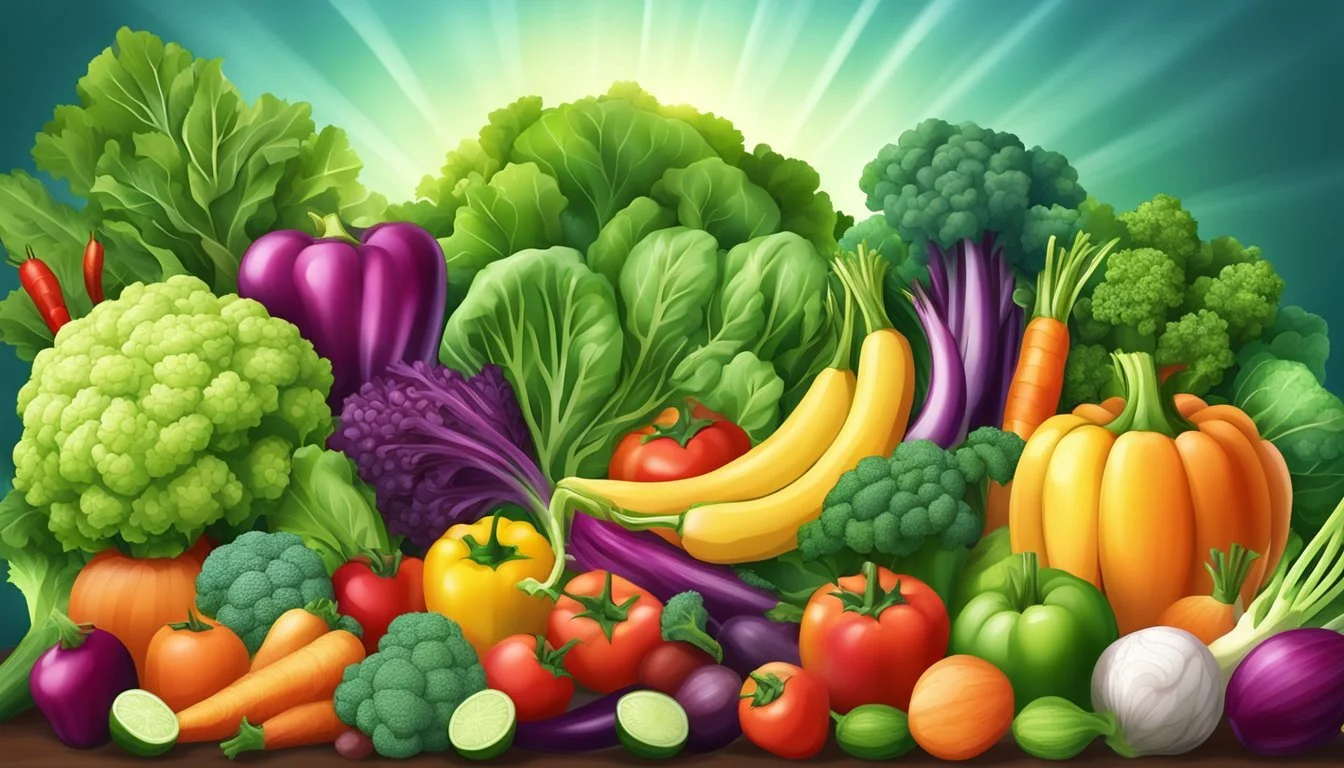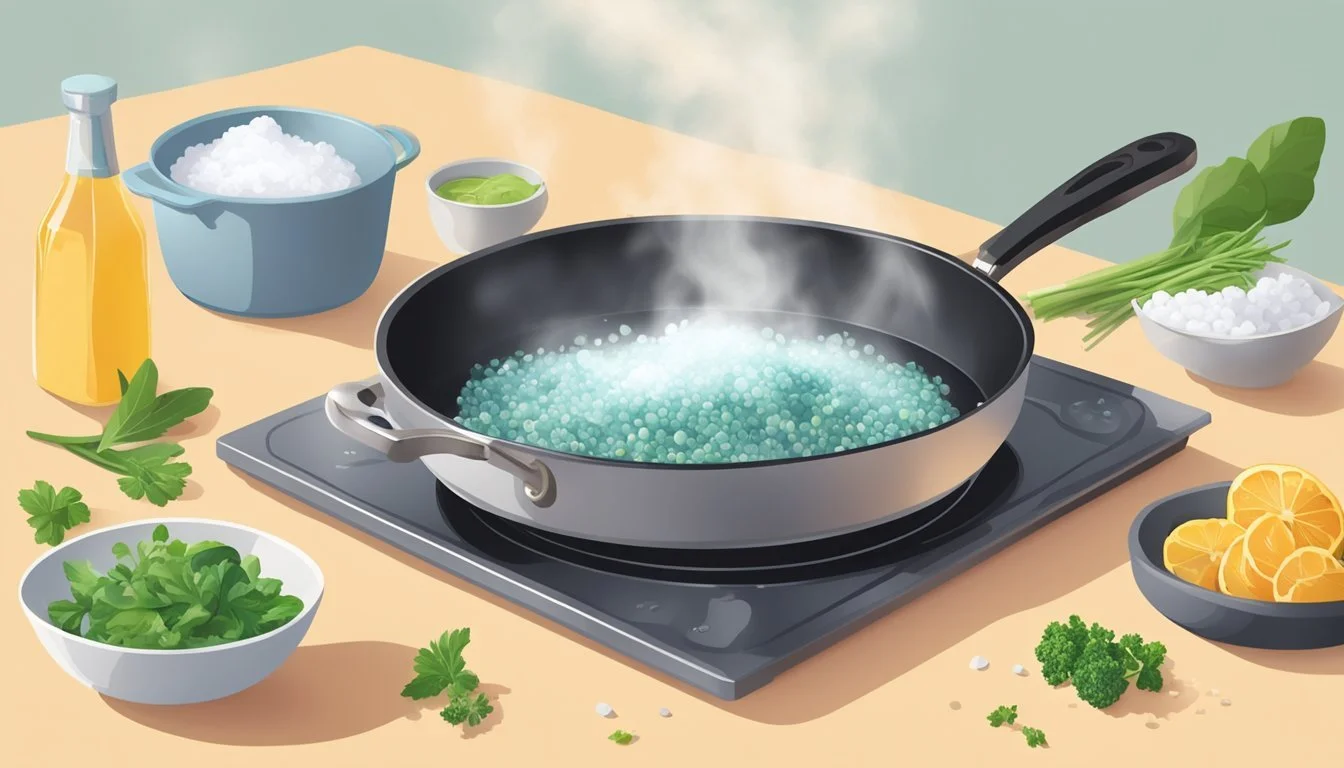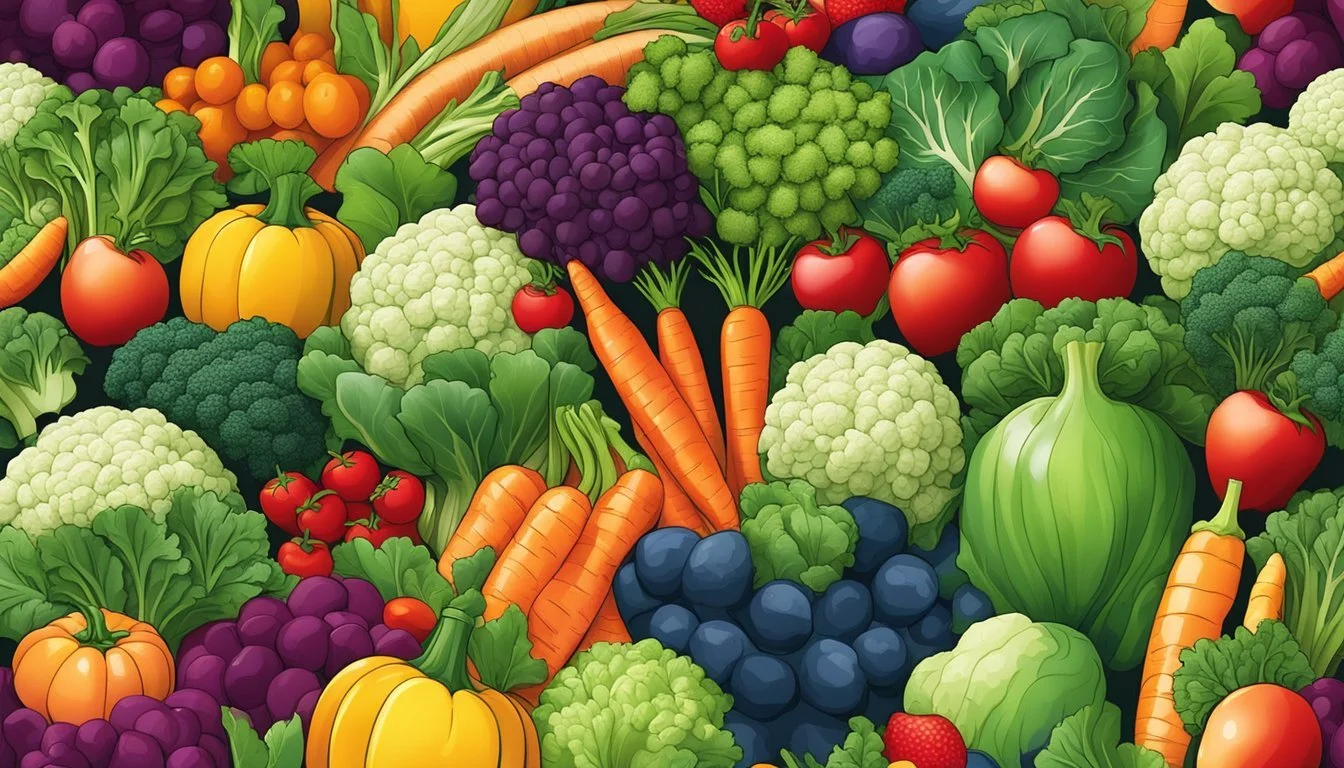What Are the Health Benefits of Raab?
Unveiling Nutritional Advantages
Broccoli rabe, often referred to as rapini or raab, is a leafy green packed with a variety of nutrients that contribute positively to human health. It is part of the Brassica genus, which places it in the same family as more commonly known vegetables such as cabbage, broccoli, and Brussels sprouts. As a cruciferous vegetable, it comes with an impressive nutrient profile, including vitamins A, C, and K, minerals like iron, calcium, and potassium, and a range of phytonutrients.
The nutritional value of broccoli rabe is noteworthy for its potential health benefits. The vegetable provides a low-calorie option rich in dietary fiber, which supports digestive health. Moreover, broccoli rabe is a source of glucosinolates and flavonoids, compounds known for their antioxidant properties. These substances can help protect cells from damage and may play a role in reducing the risk of certain chronic diseases.
Broccoli rabe also contains vitamins that are vital for maintaining bodily functions. Vitamin K, which is abundant in rapini, is essential for bone health and proper blood clotting. Vitamin A supports the immune system and is important for eye health, while vitamin C is known for its role in boosting the immune system and maintaining skin integrity. The presence of iron and folate in broccoli rabe is significant for preventing anemia, making this vegetable not only a nutritious but also a versatile ingredient in a variety of culinary dishes.
Nutritional Profile
Broccoli rabe, also known as rapini, stands out for its impressive nutritional profile. This leafy green is particularly rich in vitamins A, C, and K. Specifically, a serving contains substantial amounts of vitamin A, which supports vision and immune function, and vitamin C, which is essential for skin and bone health and has strong antioxidant properties. Vitamin K is crucial for blood clotting and bone health.
The vegetable's mineral content includes calcium, iron, potassium, magnesium, and zinc. These minerals are vital for maintaining bone density, oxygen transport, nerve function, muscle health, and immune system support. Additionally, broccoli rabe has a notable amount of folate, essential for DNA synthesis and repair and particularly important during pregnancy for fetal development.
When it comes to macronutrients, broccoli rabe is a source of protein and fiber, both important for maintaining a healthy metabolism. The protein helps in the building and repair of tissues, while the fiber aids in digestion and can help control blood sugar levels.
Despite its slightly bitter taste, which some people find appealing, this bitterness doesn't detract from its nutritional value. Moreover, broccoli rabe is recognized as nutrient-dense, meaning it delivers a high amount of nutrients for a low number of calories. This makes it an excellent addition to a healthy diet, providing a rich source of nutrients with minimal calorie intake.
Health Benefits of Raab
Raab, commonly known as broccoli rabe or rapini, serves as a nutrient-dense cruciferous vegetable famed for its potential in enhancing various aspects of health. It is particularly noted for its rich composition of vitamins, minerals, and bioactive compounds that contribute to its health-promoting properties.
Cardiovascular Support
Broccoli rabe boasts high levels of antioxidants and fiber, which can aid in improving heart health. Antioxidants like vitamin C help combat oxidative stress, while fiber can regulate blood cholesterol levels. The iron content may also help in maintaining healthy oxygen circulation in the blood.
Cancer Prevention
The consumption of cruciferous vegetables like raab is linked to a reduced risk of cancer due to glucosinolates—compounds which can be converted into isothiocyanates such as sulforaphane. This compound has been studied for its potential to inhibit the growth of cells in prostate cancer and other types.
Bone Health and Density
Rich in calcium and vitamin K, which are vital for maintaining bone density, raab supports bone health and may help prevent osteoporosis. The presence of magnesium further complements calcium in promoting strong bone structure.
Vision Improvement
Raab contains carotenoids such as lutein and zeaxanthin, which are associated with eye health. These antioxidants are known to lower the risk of macular degeneration and other eye conditions, endorsing raab as a beneficial item in a diet for vision improvement.
Digestive Health
High levels of dietary fiber in raab aid in promoting digestion and can help maintain a healthy gut. Fiber facilitates bowel movements and can reduce the occurrence of constipation.
Anti-Inflammatory and Immune Support
The flavonoids and vitamin C present in raab possess anti-inflammatory properties. This may provide immune support and reduce inflammation in the body, which is a common factor in many chronic diseases. Vitamin C also plays a crucial role in immune defense by supporting various cellular functions.
Preparing and Cooking Raab
Raab is a versatile ingredient that offers both nutritional value and a variety of ways it can be prepared and incorporated into the diet. Cooking techniques can range from simple to more involved, depending on personal preference and the desired outcome in terms of flavor and texture.
Ways to Cook Raab
Steaming: Steaming raab for a few minutes allows it to retain most of its nutritional value while softening the texture. It can be served as a healthful side dish.
Sautéing: Quick sautéing in olive oil with garlic brings out a pleasant nutty flavor, countering any bitterness.
Blanching: Blanching raab in boiling water for a couple of minutes and then shocking it in ice water helps to maintain a vibrant green color and a crisp texture.
Grilling: Drizzling raab with olive oil and placing it on a grill for a short period of time can enhance its flavor with a smoky char.
Incorporating into Diet
Salads: Raw raab can be chopped and added to salads, providing a nutritious crunch.
Italian Cuisine: Its compatibility with Italian cuisine means it can be used in pasta dishes, often with a hint of lemon juice and red pepper flakes to enrich the taste.
As a Side: Raab makes an excellent side dish that can accompany a variety of main courses, benefiting from a simple preparation that highlights its quality.
Tips for Enhancing Flavor
Seasoning: Season raab with salt to taste and consider adding red pepper flakes for a bit of heat.
Acidity: A splash of lemon juice can add a bright, balancing note to the raab's natural bitterness.
Aromatics: Cooking raab with garlic infuses it with a robust flavor that complements its natural nuttiness.
Oils: Finish the dish with a drizzle of high-quality olive oil to add richness and depth.
Through these cooking techniques and flavor enhancements, raab can be transformed into a delicious dish that elevates its natural qualities.
Understanding Raab Varieties
Raab, also known as "rapini" among other names, is a term that refers to the edible flowering tops of plants in the Brassica family. While many varieties of raab exist, some of the most common ones include broccoli raab, turnip raab, and Chinese broccoli (also known as "gai lan").
Broccoli Raab: Broccoli raab, sometimes called Italian turnip, features a slightly bitter taste and is notable for its edible leaves, buds, and stems. This variety is rich in vitamins A, C, and K, and is not to be confused with regular broccoli, as it is more closely related to the turnip.
Features: Broccoli raab has long leafy greens with small broccoli-like buds.
Bitter Taste: Due to the presence of glucosinolates, this variety has a distinctive, slightly bitter flavor.
Edible Parts: All parts of broccoli raab are edible, including the leaves, buds, and stems.
Chinese Broccoli (Gai Lan): Chinese broccoli, on the other hand, has thicker stems and larger leaves. It is known for being a bit sweeter than other raabs and is a staple in Asian cuisine.
Features: It has broad, flat leaves and thick stems with a flavor that is somewhat sweeter than its Italian counterpart.
Bitter Taste: Less pronounced than broccoli raab, but still present.
Edible Parts: The leaves, stems, and small flower heads are all edible.
Turnip Raab: Turnip raab is another variety that comes from the flowers of the turnip plant. Its tender shoots and leaves are typically harvested for consumption.
Features: Turnip raab includes the leafy greens as well as the flowering parts of the turnip plant.
Bitter Taste: Generally milder than broccoli raab.
Edible Parts: The shoots and leaves are harvested for eating.
Each variety of raab is appreciated for its unique taste and nutritional benefits, and can add both flavor and a nutritional boost to a variety of dishes.
Frequently Asked Questions
Broccoli rabe, also known as rapini, is a green cruciferous vegetable that offers a range of health benefits due to its rich nutrient profile. This section addresses common inquiries regarding its nutritional advantages, particularly in special circumstances and day-to-day wellness.
What nutritional advantages does raab offer during pregnancy?
During pregnancy, broccoli rabe is beneficial as it is rich in folate, which supports fetal development and can help prevent neural tube defects. It also provides a good source of calcium and vitamin K, essential for bone health.
Can eating raab aid in weight management?
Broccoli rabe can contribute to weight management due to its high fiber content. Fiber promotes satiety, which can reduce overall calorie intake. The presence of nutrients like vitamin C and A supports overall health in a low-calorie package.
How does the nutrient profile of broccoli rabe compare to that of traditional broccoli?
Broccoli rabe has a similar nutrient profile to traditional broccoli but with a slightly bitter taste. It is high in vitamins A, C, and K, as well as minerals like potassium and calcium, but it stands out with its higher levels of iron and antioxidants.
What are the recognized health benefits of broccoli for general wellness?
The health benefits of broccoli include support for the immune system due to its high vitamin C content, the promotion of bone health through calcium and vitamin K, and the potential reduction of chronic disease risk because of its antioxidant properties.
Does broccoli rabe contribute significant calories when prepared with olive oil and garlic?
When prepared with olive oil and garlic, broccoli rabe is still considered a low-calorie dish. Olive oil adds healthy fats and garlic provides additional health benefits, such as improved heart health and potential antimicrobial effects.
Is there evidence supporting broccoli rabe as beneficial for renal health?
The evidence suggests benefits for renal health due to broccoli rabe's contribution to overall antioxidant status and its low-oxalate content compared to other leafy greens, which is preferable for individuals with kidney concerns.






